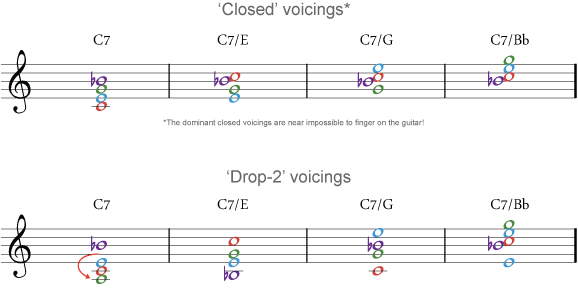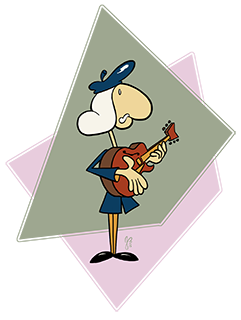For the second inversion, we bring the third above the root. The root is now the second note down in the chord. The root is the third note down on the staff with the third inversion. If we invert the chord again, we have the same voicing.
Knowing inversions is handy for when you start moving towards voice leading. 'Voice leading' is when a melody comes through very distinctly through chord changes. This is generally accomplished by having the notes in a melody line follow in a relatively tight area on the fretboard or staff.
By knowing all the intervals of different chords, you are putting an essential tool in your bag for good voice leading.
Note that these notes are all bunched together -- these are 'closed voicings.' When you have one of the notes outside the pack, that is where the 'drop 2' and 'drop 3' voicings come in. When the second voice of a closed voicing is dropped an octave, that makes a 'drop 2' voicing.
Below, I mapped out drop 2 inversions for maj7, mi7, mi7-5, dom7, maj6, min6 and diminished chords on the staff and then plotted the fingerings. It was a good exercise which you might try yourself on blank paper.
| inversions_drop2_staff.pdf |



 RSS Feed
RSS Feed
